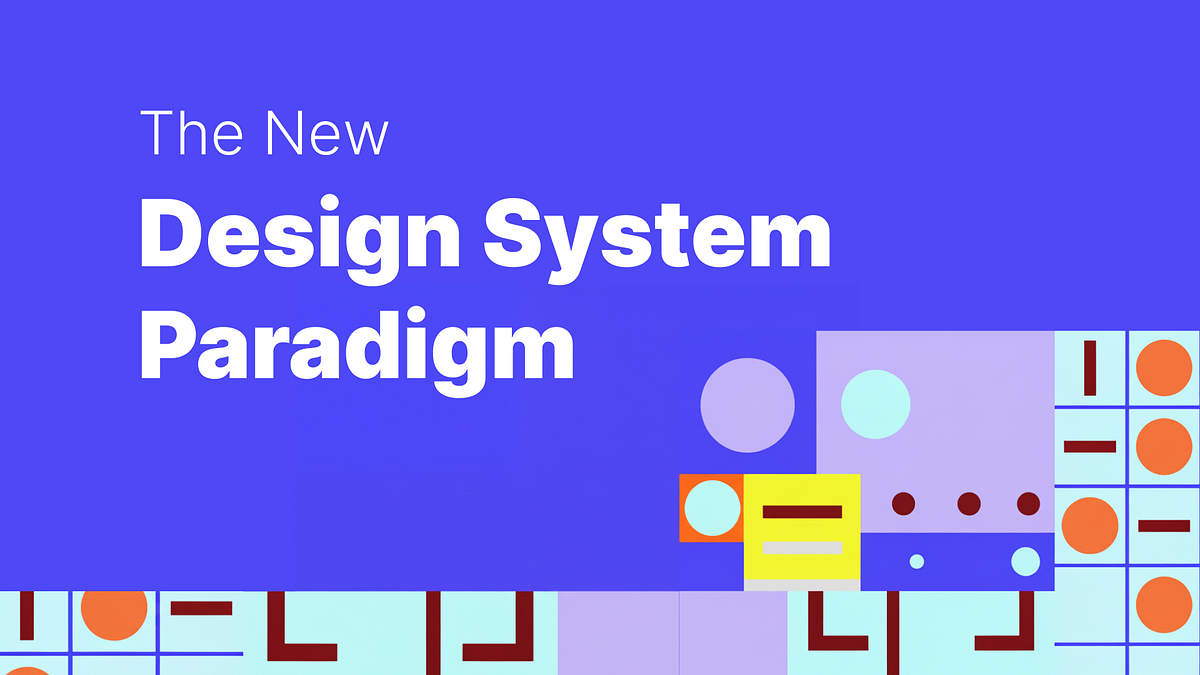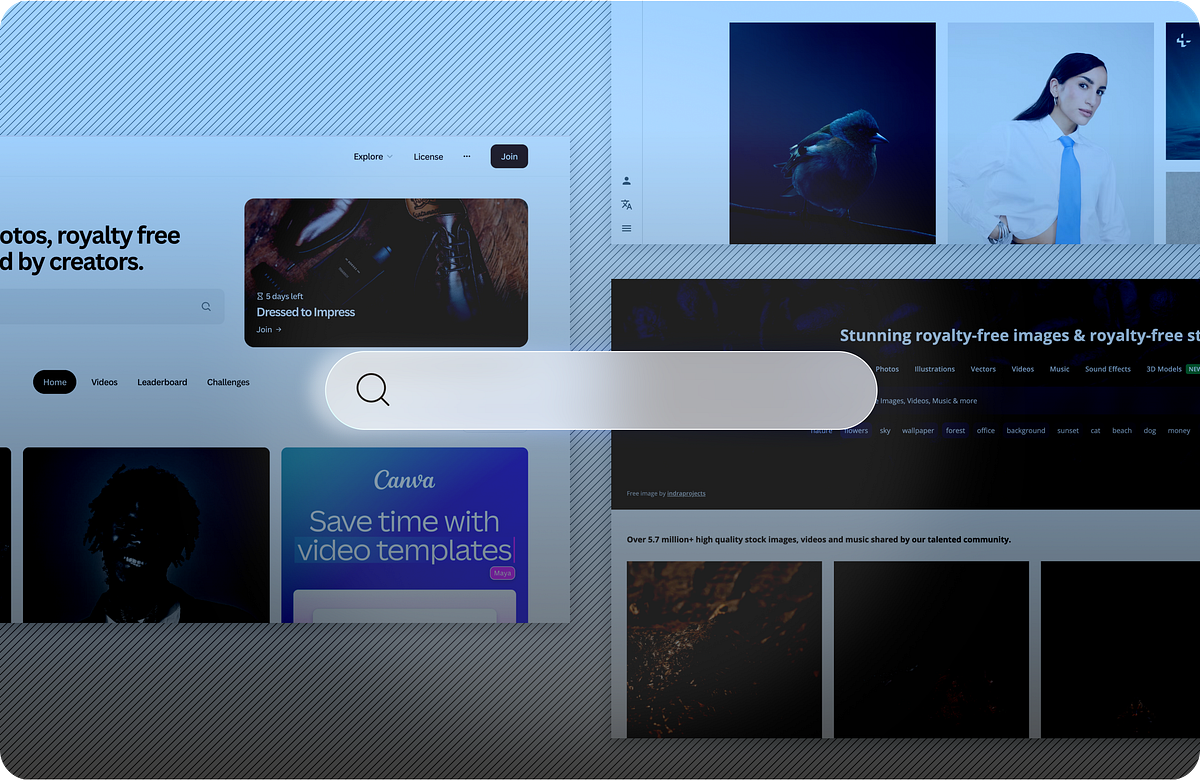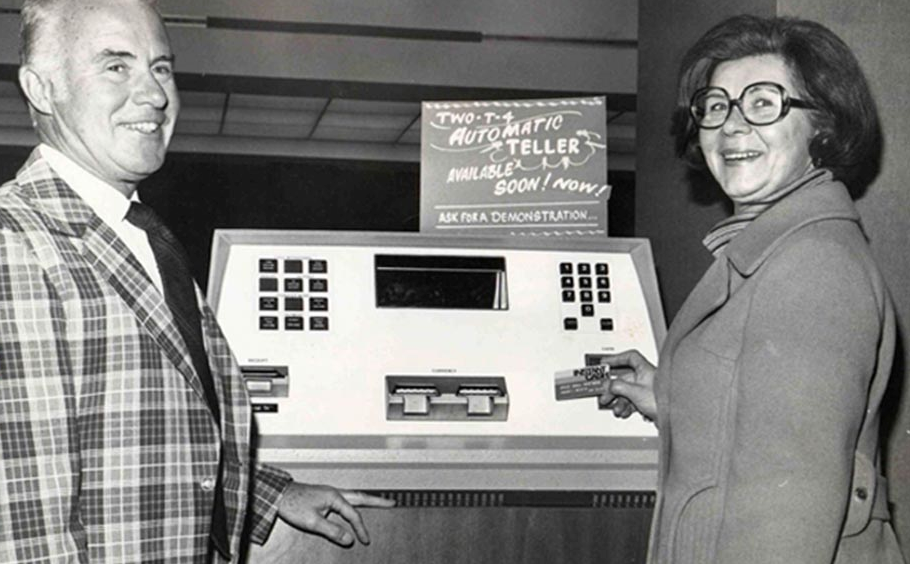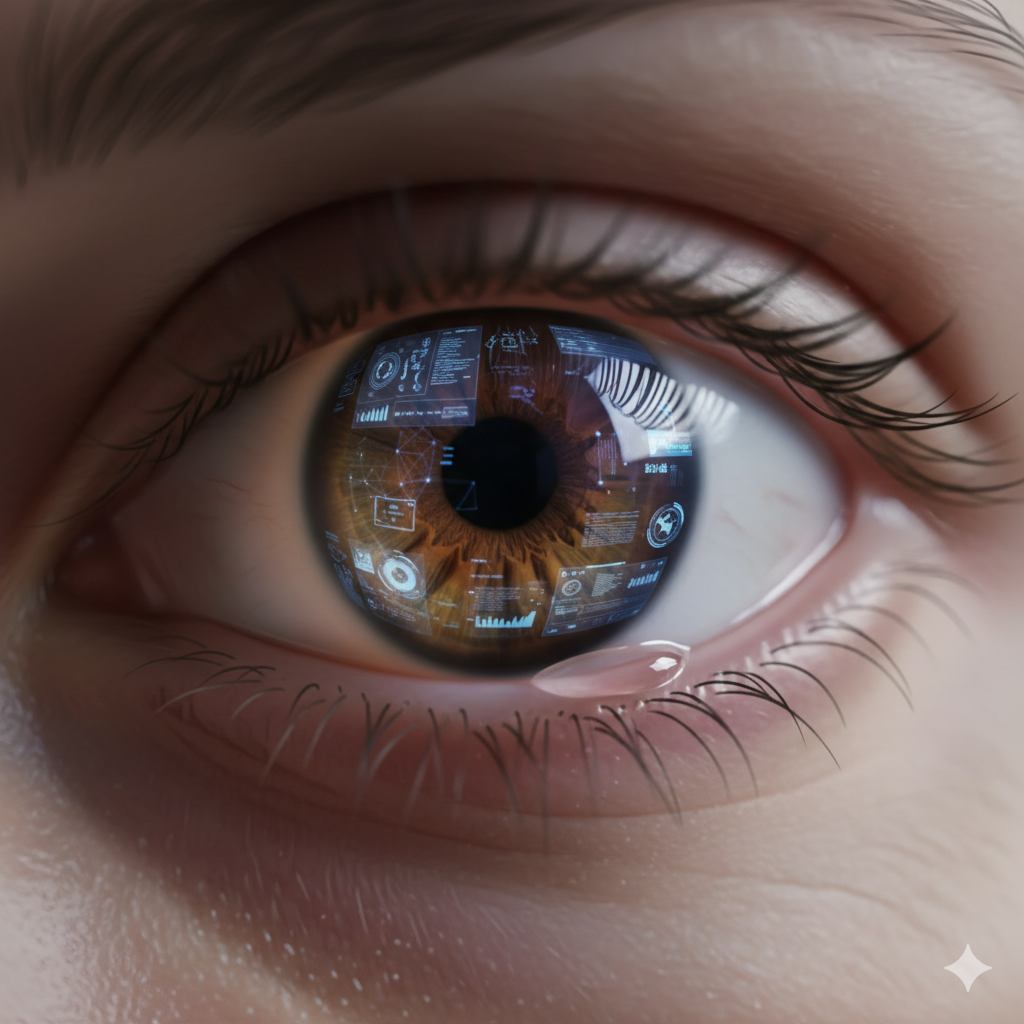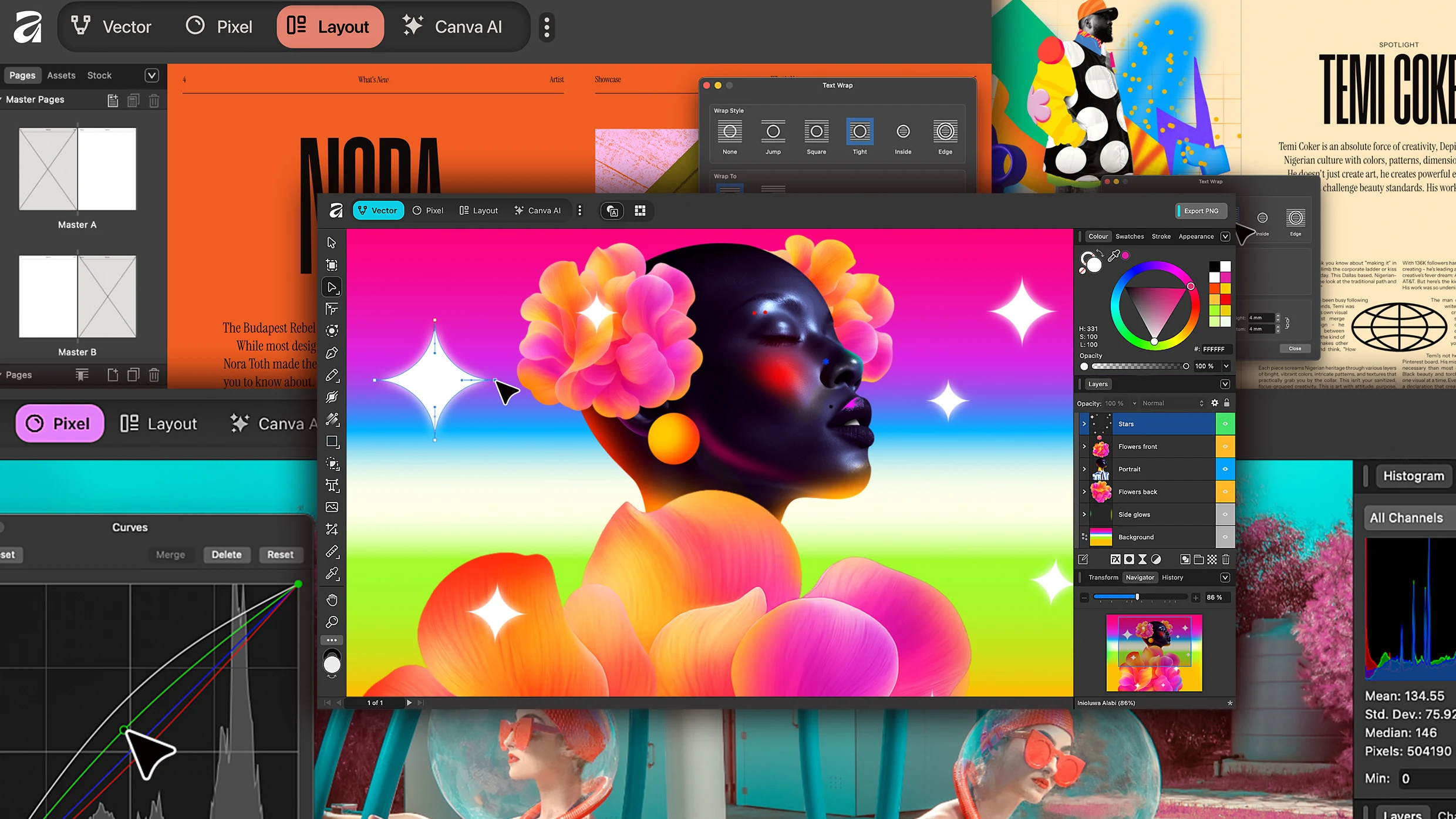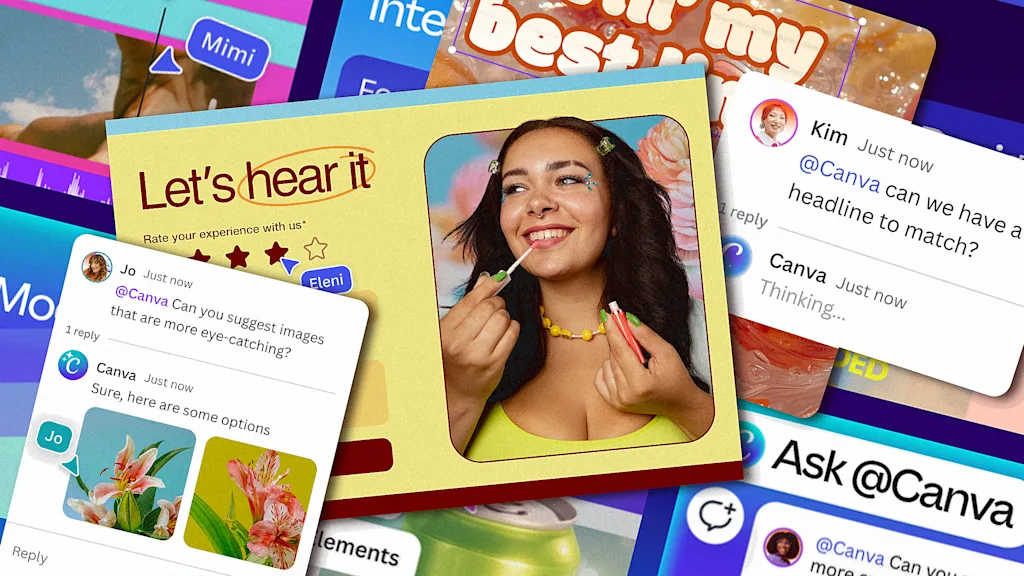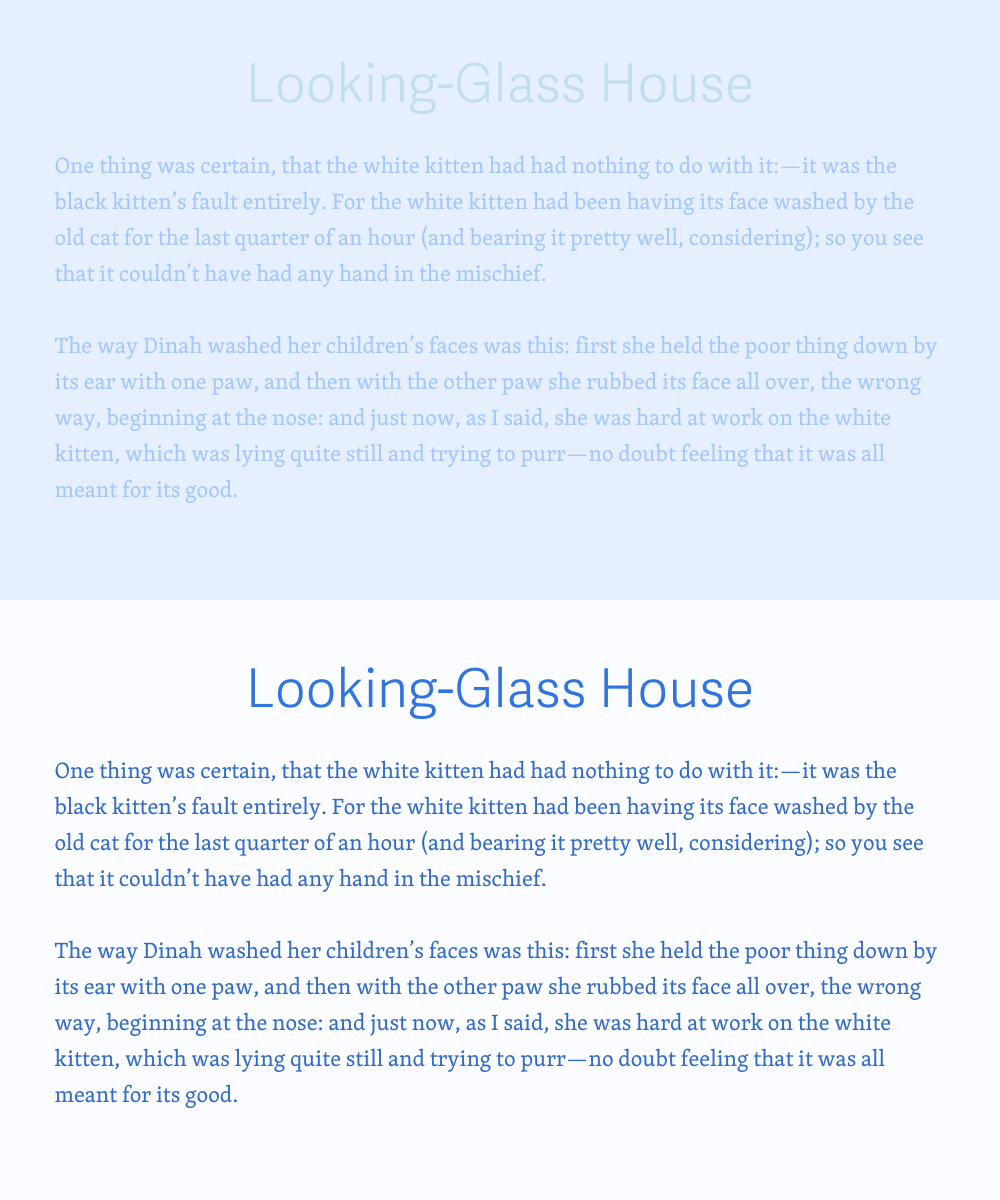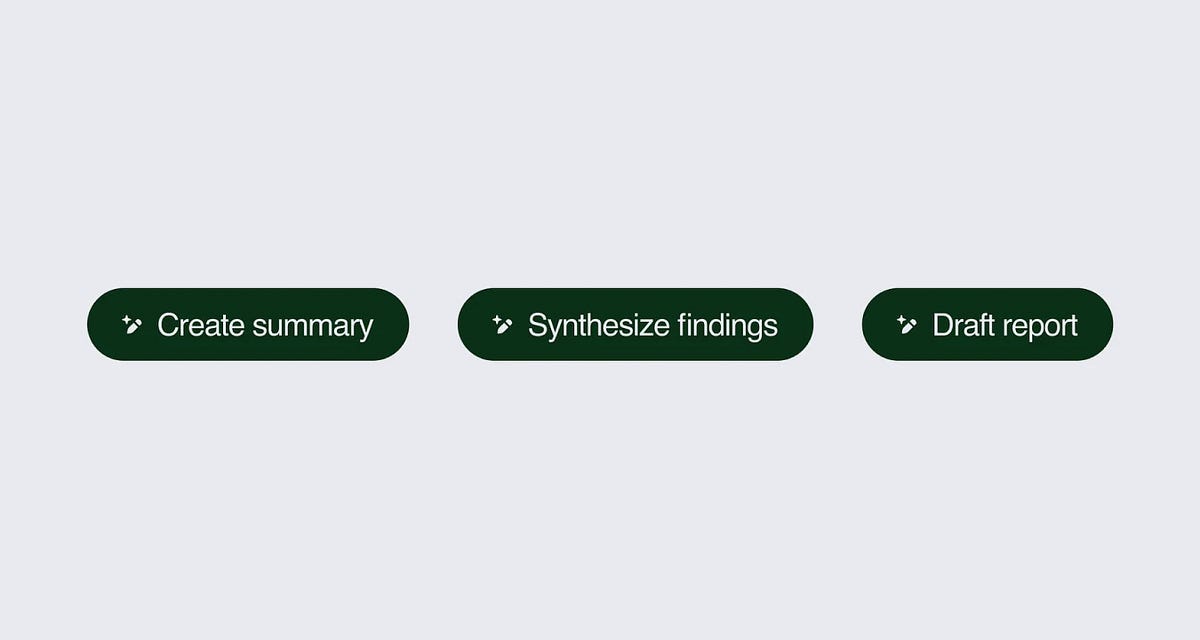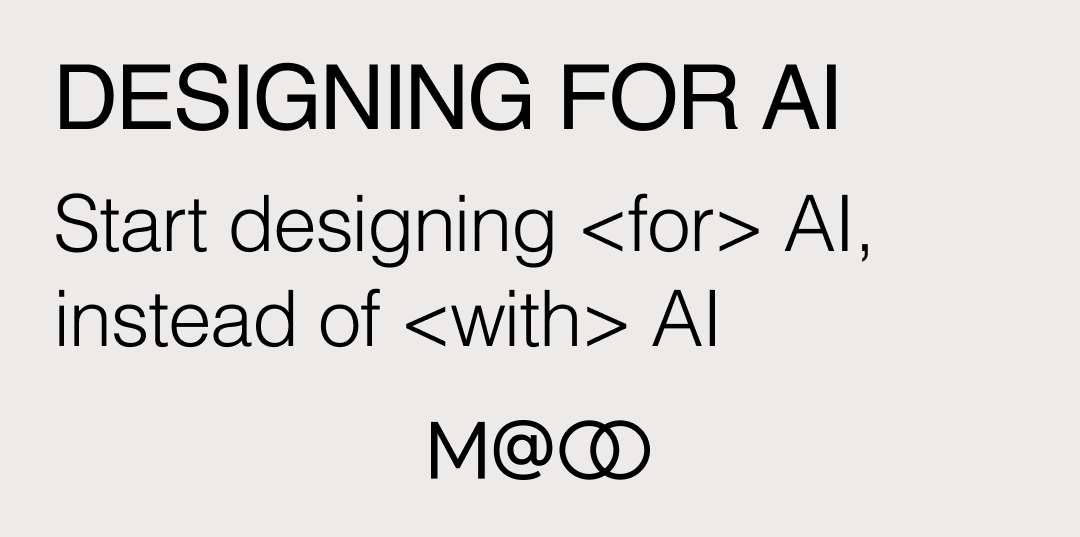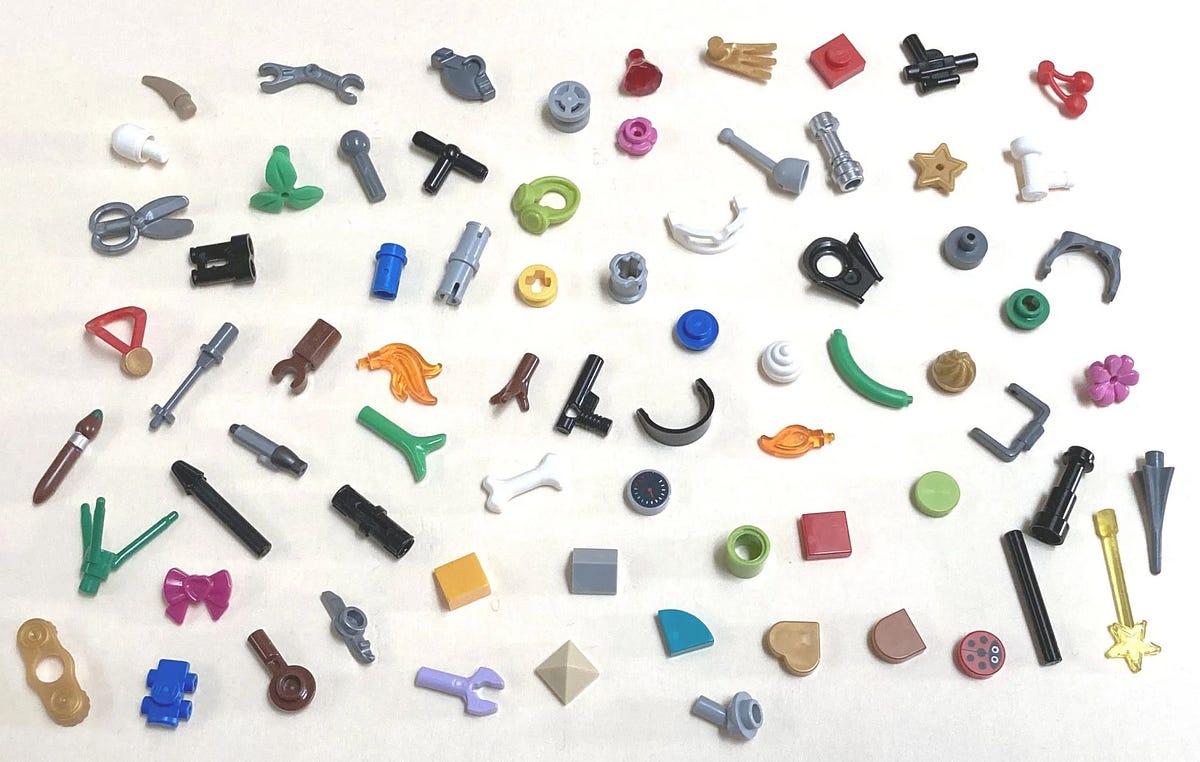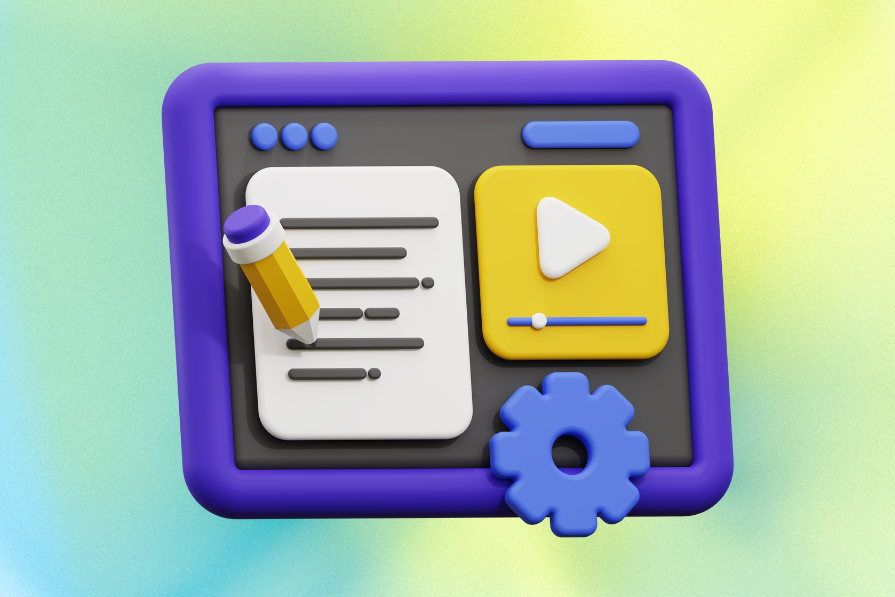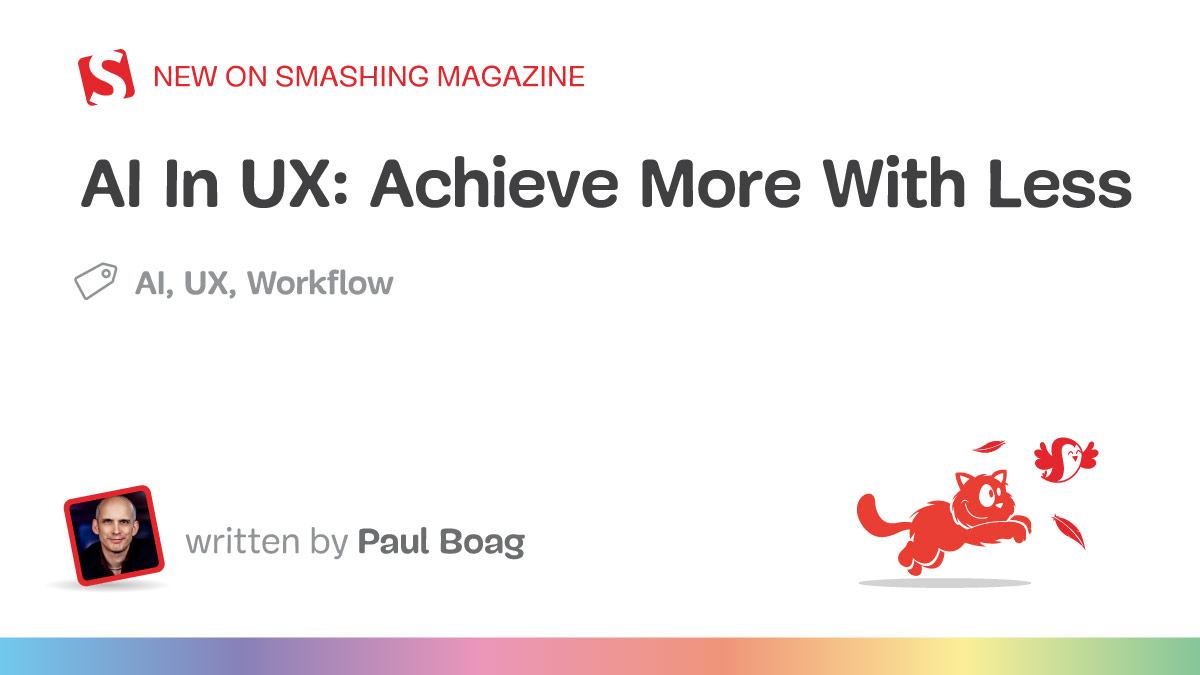UX design
UX design
[ follow ]
#design-systems #ux #product-design #prototyping #accessibility #human-centered-design #prompt-engineering
fromMedium
7 months agoDesign System Success with AI Coding Assistants
AI coding assistants have changed the way developers work by automating repetitive tasks, providing intelligent code suggestions, and streamlining workflows. However, these benefits can quickly vanish if the AI's output ignores your design system. Maintaining strict design consistency across multiple projects is critical for preserving brand identity and user experience - and that is precisely where a well-thought-out, composable design system can help.
UX design
fromMedium
4 days agoDesign prompt-building interfaces
One of the most persistent problems in AI products today is this: people still aren't sure what these systems are capable of, or how to get the best out of them. This is because most AI tools still greet users with a single blank box and a placeholder as vague as it is open-ended: "Ask anything." The result? Without clear guidance, users start crafting prompts in haste, iterate through endless revisions, lose control of the flow, and gradually pollute the context with fragmented instructions.
UX design
fromLogRocket Blog
5 days agoAI-first helpdesks: The UX shift businesses can't ignore - LogRocket Blog
Businesses replacing human support agents with chatbots isn't new. Even before the AI chatbots of today, which are extremely common now, companies were using heavily engineered chatbots that could understand only certain keywords and respond with specific answers. They were terrible, but the one remarkable thing about them is that they showed us what different demographics really expect from customer support and set the standard for how AI-first helpdesks should work - not only in terms of support agents but support overall, including documentation.
UX design
UX design
fromLogRocket Blog
3 days agoI think the next UX era will shock us: Here are my 3 big predictions - LogRocket Blog
UI/UX design evolved from complex, function-first interfaces to minimalist, user-centric ones and will continue evolving with HCI innovations toward more intuitive, accessible futuristic UIs.
fromMedium
2 days agoWhy Most UX Portfolios Fail to Impress Stakeholders (and How to Fix It)
Only around 10% of junior to mid-level designers include any metrics in their portfolios. Even at senior levels, metrics tend to be design-focused: task completion rates, user satisfaction, or system adoption. These measures reflect design quality and usability, but they often stop short of showing what stakeholders truly care about: business outcomes. That gap in language creates a trust barrier between design teams and decision-makers. We often demonstrate how users feel, but not how that translates into performance, efficiency, or growth.
UX design
fromMedium
1 day agoIntuitive Interfaces: What Actually Makes Them Clear
There are a few key factors that make an interface clear. They shape how people see your product, whether they want to come back, and if they'll repeat the experience. Right now, there's no magic template - not even AI - that can instantly make your design obvious and attractive. A truly intuitive interface comes only from systematic work: taking into account the business goals, the product itself, and the way your audience thinks.
UX design
fromMedium
2 days agoWhat 5 Musicians Taught Us About Designing a Guitar Plugin Store
VeJa is a company that creates guitar plugins simulating amplifiers for music production. They were selling exclusively on the MOD Devices platform but wanted to expand their reach with their own online store. The challenge? They had great products, a loyal niche following, but no website. Just a logo. And us. The brief was simple: Our bootcamp team of three had just 8 days to prototype a e-commerce platform that would help VeJa compete
UX design
fromMedium
17 hours agoThe hidden structure of digital products
To truly understand a digital product as a complete entity, our industry has two powerful but somewhat disconnected frameworks. Brad Frost's Atomic Design gives us the language for the visible architecture of a product, the tangible components we see and interact with. Parallel to this, the academic work of MIT's Daniel Jackson on Conceptual Models gives us a rigorous language for the invisible foundation, the deep logic and rules that govern how a product behaves.
UX design
UX design
fromMedium
4 weeks agoInnovating the Workspace: Crafting a Home Office Solution with Spacious, Adjustable, and Movable...
Adjustable, ergonomic, minimalist desk with hidden storage and mobility adapts to varied home office constraints to maximize efficiency, flexibility, and usable workspace.
UX design
fromVue.js Jobs
2 days agoFront-End Engineer - Brand Marketing Strategy Department, Marketing Division at Rakuten - VueJobs
Marketing Division expands Rakuten's membership value by integrating mobile-focused UI/UX, cross-group collaboration, and front-end talent to improve Rakuten Mobile web services.
fromMedium
2 days agoInstagram's Latest Update Shows What Good UX Communication Looks Like
If you've been using Instagram for a while, you know this isn't how they used to do things. In the past, updates just appeared. You'd open the app one morning and the navigation bar was different, buttons were rearranged, and muscle memory went out the window. No heads-up. No explanation. No sense of control. And the internet would explode with backlash.
UX design
UX design
fromYanko Design - Modern Industrial Design News
10 hours agoMechanical Braille Embosser Labels Medicine, Food With No Power - Yanko Design
Sakshar is a compact, affordable Braille embosser designed to enable visually impaired users to create tactile labels for everyday items, enhancing independence and usability.
fromFast Company
1 day agoFriction can make the customer experience more human
Maybe you were at a coffee shop and when your turn came, you opened your payment app, tapped your phone on the payment device, grabbed your cappuccino, and were done. Quick and easy. Maybe too quick and easy. Did the coffee shop miss a chance to engage with you? Did Mastercard miss an opportunity to show how their brand made this "priceless" moment possible? Did you miss an opportunity to teach your 8-year-old daughter a lesson on the value of money?
UX design
UX design
fromHarvard Business Review
3 days agoHow Tech Product Managers Can Drive Innovation by Focusing on Customer Needs - SPONSOR CONTENT FROM CAPITAL ONE
Prioritize validated customer problems over building appealing features to ensure product-market fit, stakeholder alignment, and team readiness for execution.
fromCreative Review
3 days agoBuck's new animations for LinkedIn bring milestones to life
Global creative company Buck has joined with LinkedIn to give a visual refresh to the platform's in-app milestone moments. Described as "a big glow-up" by LinkedIn's director of product design Audrey Davis, the redesign includes a new suite of animations that hope to make celebrating on LinkedIn a more expressive and engaging experience. Prioritising inclusive character representation, creative metaphors that "connect across cultures", and the blue of the LinkedIn brand, these new illustrations capture a range of milestones and emotions.
UX design
fromMedium
2 days agoSora app icon: a visual breakdown
Since I can't use the app itself, I thought I'll do a breakdown of what I can actually see - the app icon, it looks simple at first glance but it packs a lot if we can deconstruct it. I'm doing this breakdown as a fun exercise in design appreciation, I know my breakdown will probably not going to align with the authorial intent behind it. If you like this breakdown please share it, now let's dive in.
UX design
fromYanko Design - Modern Industrial Design News
6 days agoHow to Build a Cult Brand on Your Own Terms: The Black Badger Playbook - Yanko Design
This week's guest is a true original: James Thompson, the mind and hands behind Black Badger. His one-man EDC studio is renowned for its unorthodox materials, luminous rings, and groundbreaking collaborations with luxury watchmakers. Thompson's journey is anything but conventional. From getting expelled from a Swedish university to building a cult brand admired by collectors and celebrities like Robert Downey Jr., his story is a masterclass in resilience, experimentation, and the understated power of letting the work speak for itself.
UX design
fromMedium
1 month agoI stopped using Figma for 70% of my product design work...and my output doubled.
Most design problems aren't 'design' problems. They're 'Thinking' problems.They're 'Clarity' problems.They're 'Too-many-tabs-open' problems. More prototyping. More pixel-shifting. More polish in Figma alone isn't going to help you with those. For me, without clear thinking, Figma just results in more confusion, more mess, and more mockups than I can mentally manage. The Problem: Figma wasn't the bottleneck - my thinking was
UX design
fromSmashing Magazine
1 week agoAmbient Animations In Web Design: Practical Applications (Part 2) - Smashing Magazine
Ambient animations are the kind of passive movements you might not notice at first. However, they bring a design to life in subtle ways. Elements might subtly transition between colours, move slowly, or gradually shift position. Elements can appear and disappear, change size, or they could rotate slowly, adding depth to a brand's personality. In Part 1, I illustrated the concept of ambient animations by recreating the cover of a Quick Draw McGraw comic book as a CSS/SVG animation.
UX design
fromArchitectural Digest
1 week agoBehind the Scandal That Sealed the Series 7 Chair's Legacy
In the 1950s, Danish design legend Arne Jacobsen began an investigation into molded plywood. His American peers, Charles and Ray Eames, had already been experimenting with the technique, and he wondered how he might put his own twist on the material of the moment, where thin layers of veneer were glued together and molded into sculptural forms. Several icons would be born out of these trials,
UX design
fromSearch Engine Roundtable
1 week agoGoogle Testing Different Recipe Card Sizes
Google may be testing displaying different-sized cards for recipe results in the Google Search results. The cards show large and small graphics that make the results look misaligned. I am guessing it is a bug, because I cannot replicate it for all my recipe searches. I spotted this via Inspired Taste on X and I cannot replicate it for any other recipe search outside of [gravy recipes].
UX design
fromLondon On The Inside
1 week agoHow Online Casino Regulation Is Evolving With the Rise of Live Dealer Technology
Live dealer technology has introduced a new format within regulated European online casino environments. Instead of traditional click based gameplay, players now interact with real time streaming tables where a human dealer presents the game and interfaces are designed to resemble physical casino lobbies. This shift has prompted regulators in authorized European jurisdictions to adjust compliance expectations to account for streaming latency, visual prompts during live sessions, and constant user engagement indicators.
UX design
fromMedium
2 weeks agoTrust isn't a feature-it's the interface
Every product team is chasing the same dream right now - smarter, faster, more "AI-powered." But in all that optimization, we forget the thing no model can predict: what it feels like to trust a system you can't see. As Kym Primrose pointed out in "AI Won't Kill UX - We Will", the real threat to user experience isn't technology itself - it's when we let convenience replace care. I see that same tension in building apps that move money: AI isn't what erodes trust.
UX design
fromMedium
2 weeks agoClaude For Code: How to use Claude to Streamline Product Design Process
Design-to-code translation (quick prototypes) Once you craft a high-fidelity mockup, you need to turn it into code. Previously, you have either to wait for developers to do it or learn how to code and do it yourself. Nowadays you can simply send your design to Claude and it will code it. I typically use Claude to generate an HTML + TailwindCSS prototype from UI specifications or UI screenshots. Here is how it works. You attach a screenshot of the UI you want to craft and let Claude do the heavy lifting for you.
UX design
fromClickUp
2 weeks agoFree Miro User Flow Templates to Streamline UX Design | ClickUp
A product team once spent weeks debating why their new signup process wasn't working. The forms looked simple, the copy was clear, and the buttons were exactly where they thought users wanted them. But when they mapped out the steps a customer actually took, they saw the problem: users were bouncing midway because the journey was cluttered with extra clicks. 🫤
UX design
[ Load more ]


